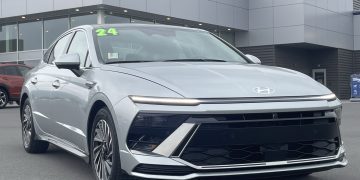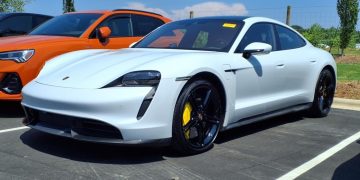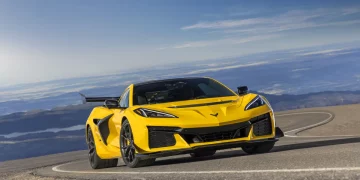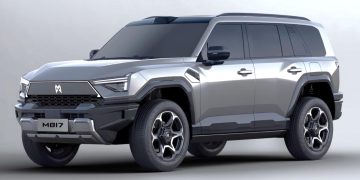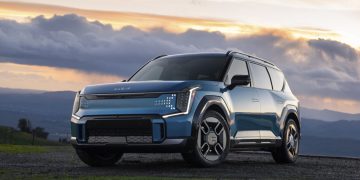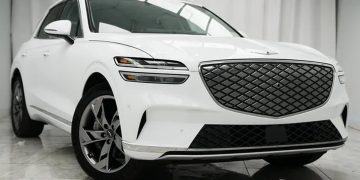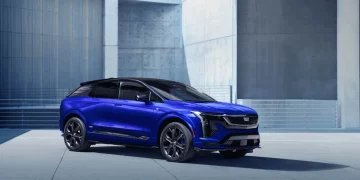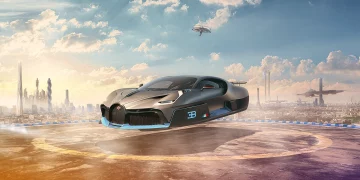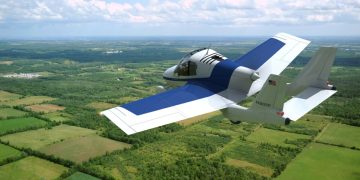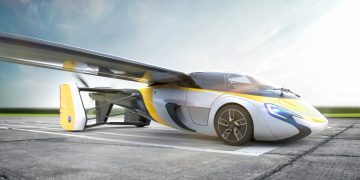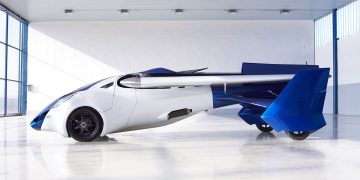The concept of flying cars has captivated the imagination for decades, appearing in science fiction films, books, and futuristic design ideas. From the iconic flying cars of The Jetsons to the more recent discussions about air mobility in urban environments, flying cars have always seemed like a distant reality. However, as technology continues to evolve, many wonder: are flying cars realistic in today’s world? Can they go from mere fantasy to functional transportation? In this article, we will explore the current state of flying car technology, the challenges it faces, and the potential for it to become a mainstream mode of transportation in the near future.
1. The Dream of Flying Cars: From Fiction to Reality
Flying cars have long been a symbol of futuristic technology. The idea of a personal, autonomous vehicle that can take to the skies has existed for more than a century, with visions dating back to the early 20th century. The evolution of this dream has been fueled by popular culture, with many depictions of flying vehicles in science fiction.
1.1 Early Visions of Flying Cars
The earliest prototypes for flying vehicles were conceptualized as early as the 1920s. While these vehicles were impractical and not functional for regular use, they laid the groundwork for future innovation. The first flying car patent was granted to the American inventor, Glenn Curtiss, in 1917, although it was not until after World War II that the concept gained more traction.
In the 1950s and 1960s, the idea of flying cars in everyday life became a significant part of the American dream, heavily promoted in futuristic literature and media. The 1960s TV show The Jetsons famously featured the “aero-car,” a flying vehicle that was able to travel through both land and air seamlessly. The image of a world with flying cars became synonymous with the future, often seen as an aspirational goal.
1.2 Modern Interest and Investment in Air Mobility
In recent years, the concept of flying cars has experienced a resurgence in popularity. Companies and startups have begun investing heavily in research and development for flying vehicles, aiming to revolutionize personal and urban transportation. This resurgence has been driven by advancements in aviation technology, electric propulsion, and autonomous systems.
Today, the goal of creating flying cars is no longer confined to the realm of science fiction. Many companies, including well-known names like Terrafugia, AeroMobil, and Vertical Aerospace, are developing prototypes of flying cars that aim to bring this vision to life. These companies are focusing on creating vehicles that are both functional and safe, aiming to integrate flying cars into existing transportation infrastructure.
2. Technological Advances Paving the Way for Flying Cars
Flying cars are no longer a far-off concept but a real technological challenge being addressed by many engineers and innovators around the world. To understand how flying cars could become a reality, we must explore the technologies driving their development.
2.1 Advances in Electric Propulsion Systems
One of the key technological advancements driving the development of flying cars is the progress in electric propulsion systems. Traditional flying cars were conceived as hybrid vehicles that could function on both land and air, using a combustion engine for ground transport and a propeller or jet engine for flight. However, with the rise of electric vehicles (EVs), many modern flying car prototypes are adopting electric propulsion systems for greater efficiency and environmental sustainability.
Electric propulsion offers several advantages for flying cars. First, electric motors are much quieter than traditional engines, which is essential for reducing noise pollution in densely populated urban environments. Additionally, electric motors are more energy-efficient, offering better range and lower operating costs. Companies are also exploring battery technologies that would allow flying cars to fly longer distances and recharge quickly, making them more practical for everyday use.
2.2 Vertical Take-Off and Landing (VTOL) Technology
Another critical development in flying car technology is the emergence of Vertical Take-Off and Landing (VTOL) systems. VTOL technology allows a vehicle to take off and land vertically, much like a helicopter, without the need for long runways. This technology has been successfully used in military aircraft for decades, and its adaptation for civilian use could be a game-changer for flying cars.
VTOL technology allows flying cars to be used in congested urban areas without the need for large airports or traditional landing strips. This would make flying cars highly adaptable to cities with limited space, allowing for a more flexible transportation system. Several companies are developing electric VTOL aircraft, which promise to be quieter, more efficient, and easier to operate than traditional helicopters.
2.3 Autonomous Flight Systems
Autonomous systems, powered by AI and advanced sensors, are another major breakthrough in flying car development. Just as self-driving cars have become a reality on the ground, autonomous flight systems can help make flying cars safer and more reliable. These systems can monitor the vehicle’s surroundings, detect obstacles, and navigate complex air traffic patterns with minimal human intervention.
Autonomous flight also addresses some of the safety concerns associated with flying cars. By reducing the need for a human pilot, autonomous flying cars can eliminate the risks associated with human error. Additionally, with the help of AI and machine learning, these vehicles can learn to adapt to changing weather conditions, avoid collisions, and optimize flight routes.

3. The Challenges Facing Flying Cars
Despite the significant progress made in flying car technology, several challenges must be overcome before flying cars can become a viable mode of everyday transportation.
3.1 Safety and Regulation
One of the most significant barriers to the widespread adoption of flying cars is safety. Flying cars must meet rigorous safety standards to ensure they are reliable and secure for passengers. This includes the ability to withstand adverse weather conditions, ensure redundancy in critical systems, and be equipped with emergency landing systems in case of failure.
Regulation is another obstacle that must be addressed. Flying cars would need to be regulated by aviation authorities, and new air traffic control systems would need to be developed to manage the growing number of vehicles in the sky. These regulations would cover everything from flight paths and altitude restrictions to pilot training and certification.
3.2 Infrastructure Development
For flying cars to become a reality, the necessary infrastructure must be in place. This includes landing pads or “vertiports,” where flying cars can take off and land, as well as charging stations for electric-powered vehicles. Cities would need to adapt to accommodate these new transportation systems, ensuring that they are safely integrated into existing urban landscapes.
In addition to physical infrastructure, there must be technological infrastructure to manage air traffic. With flying cars operating in urban areas, new air traffic control systems would be needed to ensure that all vehicles are safely coordinated in the sky. This could involve the development of sophisticated systems to monitor and regulate flying car flights, similar to current air traffic control systems used for commercial aircraft.
3.3 Cost and Accessibility
Another major challenge is the cost of flying cars. While the idea of flying cars is appealing, the price of these vehicles remains prohibitively expensive for most consumers. As with electric cars, the cost of production may decrease over time as technology improves and production scales up. However, in the early stages, flying cars are likely to be affordable only to the wealthy or large corporations.
Additionally, flying cars will require specialized training for pilots, further adding to the cost and complexity of their use. While autonomous systems may reduce the need for human pilots, there will still be a need for highly trained operators, especially during the early stages of adoption.
4. The Potential of Flying Cars in the Future
Despite the challenges, the potential of flying cars is enormous. If these vehicles become a reality, they could revolutionize transportation in several ways.
4.1 Reducing Traffic Congestion
One of the primary benefits of flying cars is their ability to reduce traffic congestion in urban areas. With flying cars operating above traditional roads, cities could experience less traffic on the ground. This would not only make commuting faster and more efficient but also reduce pollution and greenhouse gas emissions by cutting down on the number of cars on the road.
4.2 Expanding Mobility
Flying cars could provide greater mobility for people living in remote areas or regions with limited infrastructure. These vehicles could provide an easy and fast way to travel across difficult terrain, allowing people to access services and opportunities that were previously out of reach.
4.3 The Rise of Urban Air Mobility (UAM)
Urban Air Mobility (UAM) is a concept that envisions a new form of transportation in cities, with flying cars serving as an integral part of the urban transport ecosystem. UAM could allow for on-demand air taxi services, cargo delivery, and emergency medical transportation, revolutionizing how cities operate and function.
5. Conclusion: The Road Ahead for Flying Cars
Flying cars are no longer a fantasy but an emerging technology that has the potential to reshape the future of transportation. With advances in electric propulsion, VTOL technology, and autonomous flight systems, the dream of flying cars is becoming more realistic each day. However, challenges remain in terms of safety, regulation, infrastructure, and cost.
As technology continues to evolve, flying cars could become an integral part of the transportation landscape, offering solutions to traffic congestion, improving mobility, and providing new opportunities for both individuals and businesses. The road to a world with flying cars is still long, but with ongoing innovation and investment, it may not be as far off as it once seemed.

